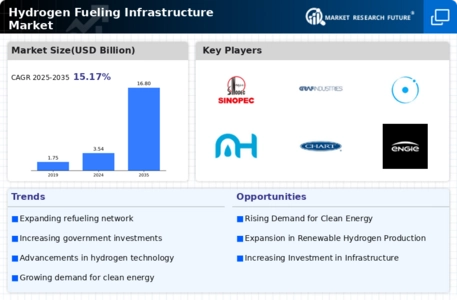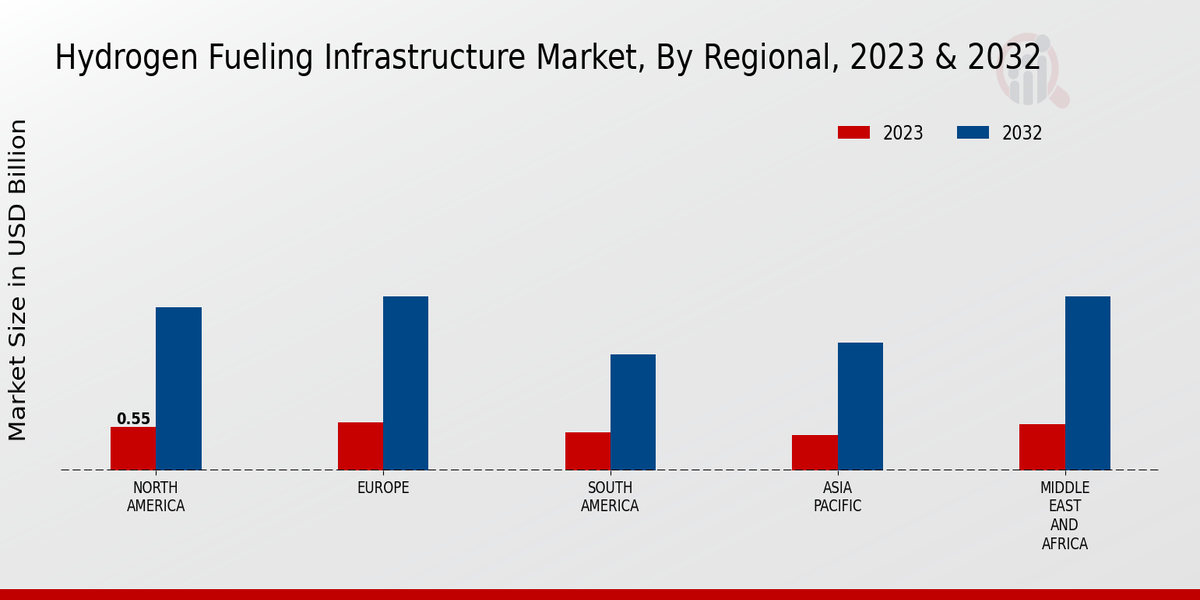Market Growth Projections
Growing Demand for Clean Energy
The increasing global emphasis on clean energy solutions drives the Global Hydrogen Fueling Infrastructure Market Industry. Governments worldwide are implementing policies to reduce carbon emissions, with hydrogen emerging as a viable alternative. For instance, the European Union aims to produce 10 million tons of renewable hydrogen by 2030, which underscores the commitment to hydrogen as a clean energy source. This shift is expected to propel the market, with projections indicating a market value of 3.54 USD Billion in 2024, reflecting the growing demand for hydrogen fueling stations and infrastructure development.
Government Initiatives and Support
Government initiatives play a crucial role in fostering the Global Hydrogen Fueling Infrastructure Market Industry. Various countries are introducing incentives, subsidies, and funding programs to promote hydrogen infrastructure. For instance, the United States Department of Energy has allocated significant funding for hydrogen research and development. Such support not only encourages private investment but also facilitates the establishment of a robust hydrogen fueling network. The market is expected to grow at a CAGR of 15.18% from 2025 to 2035, driven by these proactive governmental measures.
Rising Investment in Renewable Energy
The surge in investments in renewable energy sources is a key driver for the Global Hydrogen Fueling Infrastructure Market Industry. As nations transition to sustainable energy systems, hydrogen is increasingly viewed as a critical component. Investment in hydrogen projects is on the rise, with numerous countries committing billions to develop hydrogen infrastructure. For instance, Japan has invested heavily in hydrogen technology, aiming to create a comprehensive hydrogen supply chain. This trend is likely to enhance the market's growth, as the infrastructure required to support hydrogen fueling becomes more prevalent.
Increasing Adoption of Fuel Cell Vehicles
The growing adoption of fuel cell vehicles (FCVs) is significantly impacting the Global Hydrogen Fueling Infrastructure Market Industry. As automotive manufacturers expand their offerings of FCVs, the demand for hydrogen fueling stations is expected to rise correspondingly. Countries like Germany and South Korea are leading the charge, with extensive networks of hydrogen stations being developed to support this transition. This increasing adoption is likely to create a more favorable environment for hydrogen infrastructure, contributing to the projected market growth to 16.8 USD Billion by 2035.
Technological Advancements in Hydrogen Production
Innovations in hydrogen production technologies significantly influence the Global Hydrogen Fueling Infrastructure Market Industry. Advances such as electrolysis and steam methane reforming are enhancing efficiency and reducing costs. For example, the development of high-efficiency electrolyzers is making green hydrogen production more feasible. As these technologies mature, they are likely to increase the availability of hydrogen, thereby supporting the expansion of fueling infrastructure. The anticipated growth in the market, projected to reach 16.8 USD Billion by 2035, highlights the potential impact of these advancements on infrastructure development.





















